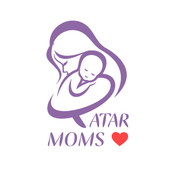From the moment of birth, the infant begins to respond to the sounds of their mother, offering smiles and spontaneous movements, communicating in an innate language of love that strengthens the emotional bond between mother and child. Known as "infant cooing," these simple sounds and gentle rhythms help the baby explore the world of sounds, interact with those around them, and lay a solid foundation for their psychological and social development. In this article, we will explore the role of infant cooing in the infant’s growth, its impact on cognitive and language development, and how it contributes to the development of future skills.
What Is Infant Cooing, and When Does It Begin?
Infant cooing refers to the spontaneous sounds that a child produces during the first few months of life as a means of communication with their parents. It is considered the first stage of language development, where the child begins to explore and respond to auditory and visual stimuli, enhancing their ability to interact with their environment.
Typically, infant cooing age begins in the first month in a very simple form and develops between the sixth and eighth weeks of the infant’s life. It continues to evolve until the baby starts speaking their first words around the age of 9 to 12 months.
What Is the Importance of Infant Cooing?
1. Language Development:
Frequent infant cooing in the early stages of life helps stimulate early language skills. The baby starts recognizing and mimicking sounds, which enhances their ability to pronounce words later on.
2. Enhancing Communication and Social Interaction:
Infant cooing strengthens the emotional bond between the infant and their parents. It enhances the baby’s ability to understand the concept of dialogue and receive responses when producing sounds, making them feel secure when hearing their voices.
3. Cognitive Development:
Infant cooing stimulates the brain to engage with sounds and recognize different sound patterns, contributing to the development of auditory memory and facilitating the process of learning language later on.
4. Expressing Emotions:
Infant cooing serves as a way to express comfort, happiness, or even discomfort without crying. This helps parents understand the baby's needs through their various sounds.
5. Stimulating Oral Development:
Frequent infant cooing strengthens the muscles of the mouth and tongue as well as the coordination between breathing and sound, making it easier for the baby to articulate words later on.
What Are the Stages of Infant Cooing?
Newborn cooing sounds develop in gradual stages, starting with simple sounds and progressively becoming more complex until the baby begins to speak their first words. Here are the key stages of baby babbling:
Stage 1: Spontaneous Sounds (Infant Cooing in the First Month)
In the first month, newborn cooing sounds are very simple. The baby produces undefined sounds such as sighs, murmurs, and spontaneous crying, which are often associated with comfort, hunger, or discomfort. The baby begins to react to surrounding sounds and may calm down upon hearing their mother's voice.
Stage 2: First Babbling (Infant Cooing in the Second Month)
By the second month, there is a noticeable development in the baby’s vocal communication. The newborn cooing sounds increase and become more distinct compared to the first month, with the baby producing long sounds and different tonal variations that reflect emotions like joy, surprise, or smiling when seeing a familiar person.
Stage 3: Repetitive newborn cooing sounds (Infant Cooing in the Third Month)
At the third month, the infant’s sound continues to develop significantly. The sounds they produce become more varied and continuous. The baby starts engaging more with those around them, using babbling to express their feelings and needs. They begin repeating the sounds they produce and experiment with different tones as if testing their voice.
Stage 4: Imitation and Word Practice (Infant Cooing in the Fourth Month)
By the fourth month, the baby’s cooing becomes clearer and more diverse. They begin to imitate the speech patterns of those around them, experimenting with new sounds. The baby becomes more aware of words and may respond to the name or simple phrases.
Stage 5: Preparing for Speech (From the Sixth Month to One Year)
At this stage, the infant cooing begins to resemble real words, such as “mama” and “dada,” with the baby recognizing their meaning. The baby becomes more capable of imitating simple words and starts developing their first vocabulary. They also use gestures along with sounds to communicate (e.g., raising their hands when wanting to be picked up).
What Are the Causes of a Baby Not Cooing?
Several factors can lead to a baby not cooing or experiencing a delay in cooing. These causes range from natural, non-concerning reasons to medical conditions that may require professional consultation. Here are the most common reasons:
Natural and Non-Concerning Causes:
- Differences in developmental pace, as some babies start babbling early while others may take more time.
- Lack of auditory stimulation and verbal interaction from parents, which may delay the baby's vocal expressions.
- Focus on other sensory or motor developments, such as rolling over or crawling, before beginning cooing.
Medical Causes That Require Consultation:
- Hearing impairment or loss, which can prevent the baby from hearing, mimicking, or responding to sounds.
- Frequent ear infections, which may affect the child's ability to hear clearly and develop speech.
- Developmental disorders, such as autism or general developmental delay, where the child may show reduced responsiveness to sounds.
- Neurological issues, which can affect the baby’s ability to control sound production.
- Respiratory infections or difficulties may cause discomfort, leading to reduced babbling.
In the end, infant cooing is one of the most beautiful moments parents share with their children. It is a vital stage in building communication skills and developing their linguistic and social abilities. Through these simple sounds, the child begins to express their needs and thoughts in the future. Observing and encouraging these interactions can contribute to the child’s positive growth, motivating parents to offer love and care at every moment. For more important articles on maternal and child health, you can Visit Qatar Moms Blog
Explore a wide selection of Infant Toys, Bath Toys, Arts & Crafts, and more baby essentials at Qatar Moms Store. Everything you need for your child's development in one place!
 FREE DELIVERY FOR ORDERS ABOVE 100 QAR
FREE DELIVERY FOR ORDERS ABOVE 100 QAR DELIVERY WITHIN 3 HOURS
DELIVERY WITHIN 3 HOURS APPLE PAY AND CARD PAYMENT AVAILABLE
APPLE PAY AND CARD PAYMENT AVAILABLE



